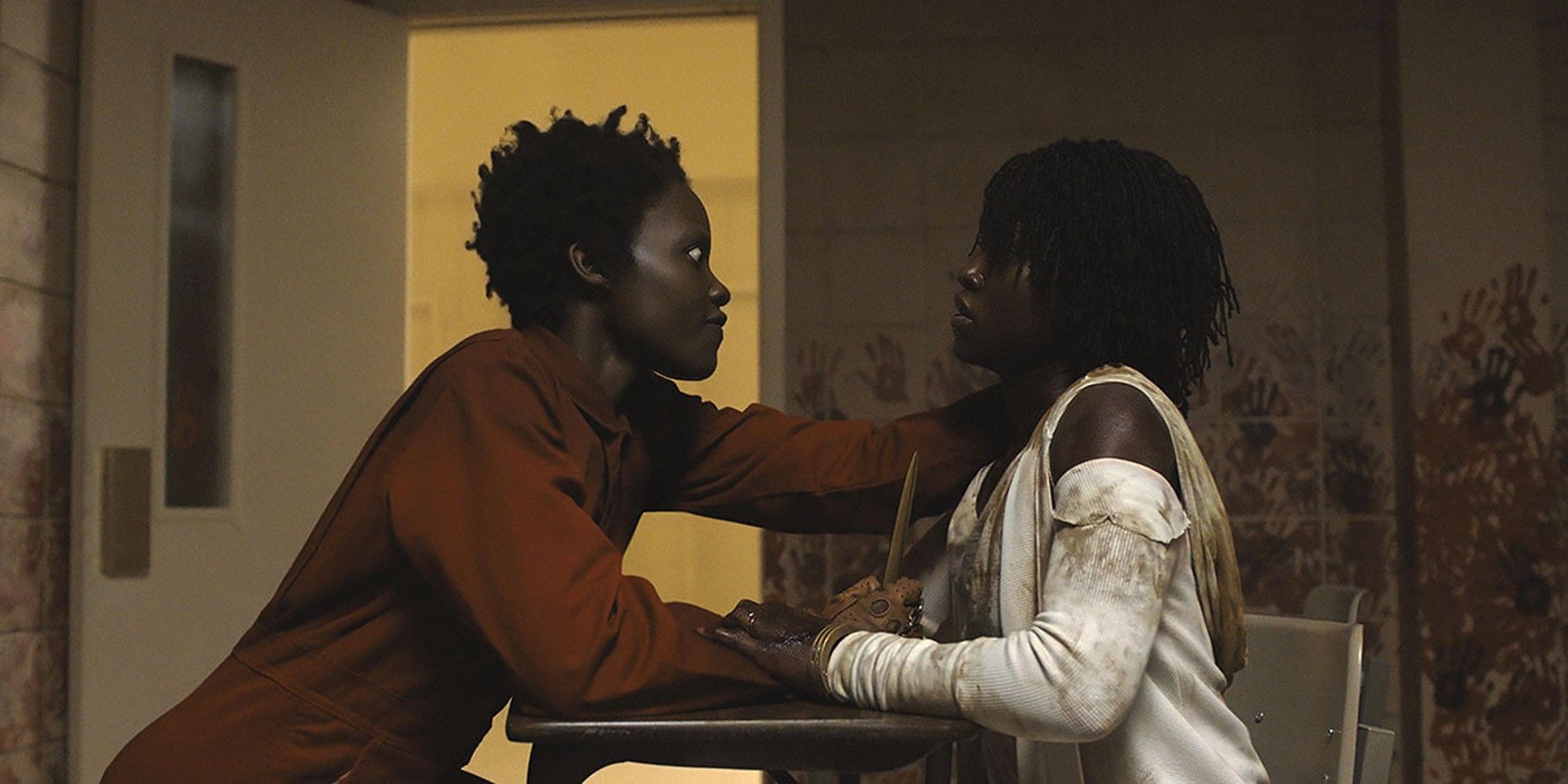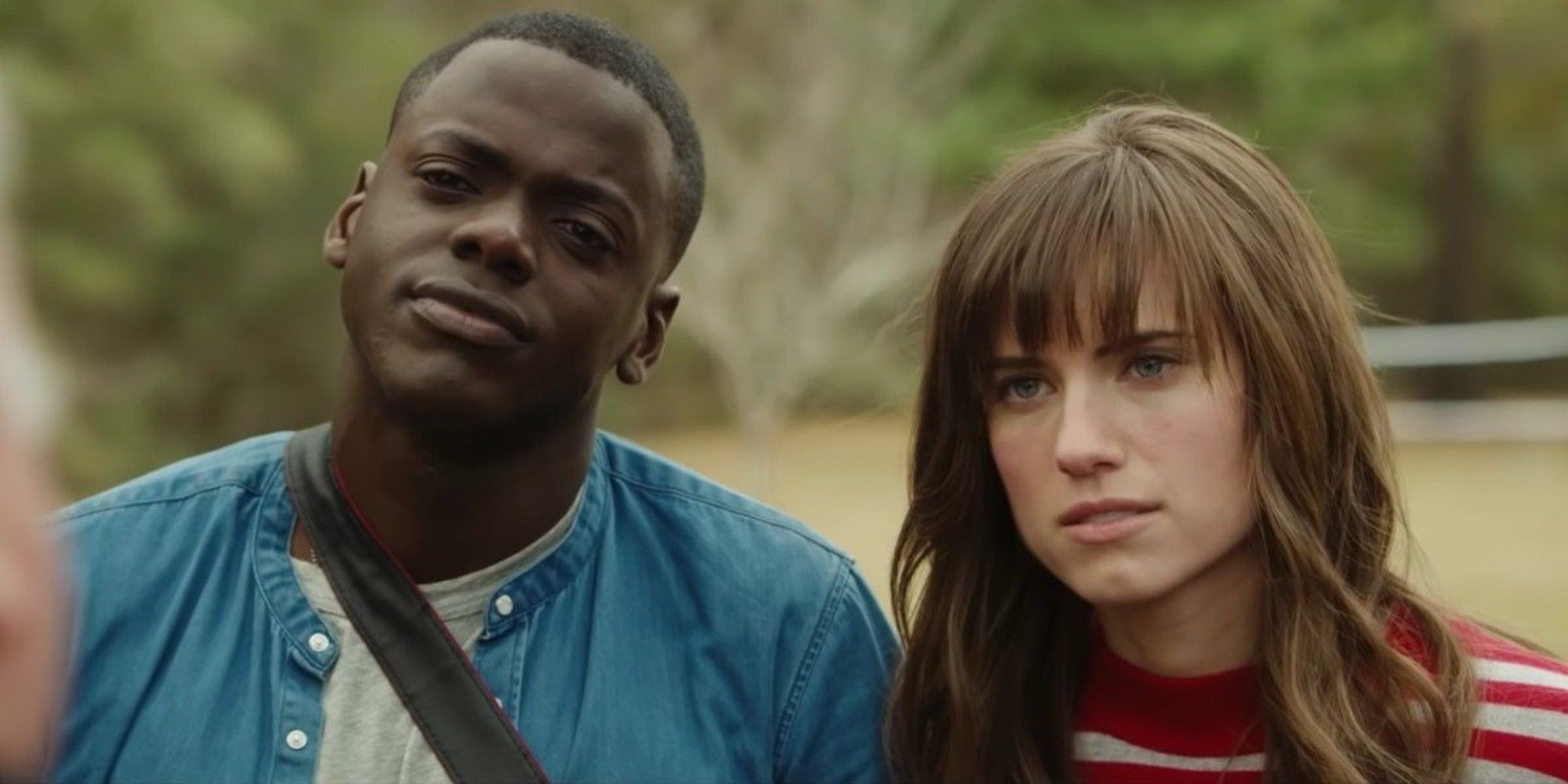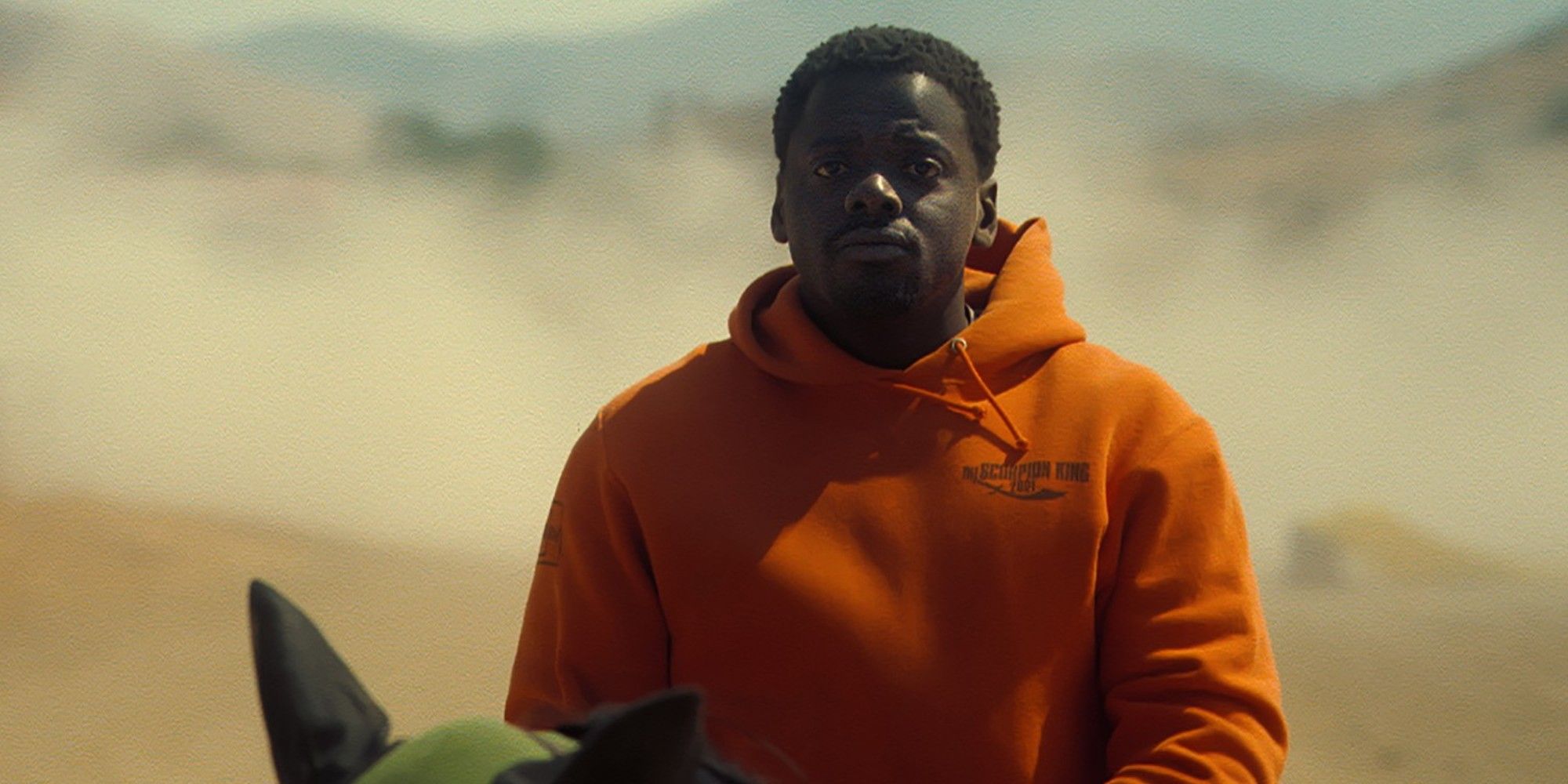This article contains very minor spoilers for Get Out, Us, and Nope.
In Jordan Peele's first scene as a filmmaker, pop music was already integral to his approach to horror.
Get Out begins with Andre (Lakeith Stanfield), a Black man lost in the suburbs. When a white car turns around to follow him, we can hear the jaunty World War 2-era song "Run Rabbit Run" playing on its speakers. Noticing the car, Andre turns around to walk in the other direction. But, before he can get very far, a figure in a metal mask knocks him out and drags him into the trunk. As the song's instrumental bridge plays, the sleepy neighborhood is none the wiser.
In the wake of Get Out's stratospheric success, Peele has continued to write and direct original work. With the recent release of his third film, Nope, we have a good amount of material to work with to start identifying the markers that define his style. In addition to often-discussed hallmarks like his ability to blend trenchant racial, social, and political commentary with genre entertainment, wary Black protagonists who avoid the mistakes that white characters commonly make in horror, and his tension-relieving use of humor, Peele's use of pop music needle drops has now emerged as a key element that continues to show up in his work.
For the uninitiated, the term ‘needle drop’ may call to mind a record player's arm lowering into the groove of a well-loved LP, and that's essentially what it means. A needle drop is any moment when a film uses existing music, not original score, to soundtrack a scene. That music can be classical, as when Francis Ford Coppola used Richard Wagner's "Ride of the Valkyries" to score American helicopters assaulting a Vietnamese village in Apocalypse Now. It can also be popular music, as when The Wachowskis used Rob Zombie's "Dragula" in The Matrix for Neo and Trinity's first meeting in a dance club.
While composer Michael Abels has turned in three fantastic scores for Peele's trio of films, all three soundtracks have showcased the director's tendency to draw musically from popular culture. Get Out first showcased Peele's penchant for needle drops, quickly following the uneasy "Run Rabbit Run" set piece with the groove of Childish Gambino's "Redbone," in a cozier scene set in Chris' (Daniel Kaluuya) apartment. In Us, Peele took his technique to the next level, using Luniz' 1995 hip-hop track "I Got 5 On It," a party song that always had a slightly eerie-sounding beat, to set the tone as the Wilson family arrives in Santa Cruz, a destination that should promise fun and excitement, but has deeper meaning for Lupita Nyong'o's Adelaide. Later on in the film, Peele uses a remixed orchestral version of the track to soundtrack the climax.
In Nope, Peele returns to the remix well. When the UFO's presence knocks out the power in Angel's truck it results in a chopped and screwed "Jean Jacket Mix" of Corey Hart's "Sunglasses At Night." There are other needle drops in the movie — Jodie Foster's "La Vie C'est Chouette," The Lost Generation's "This is the Lost Generation," a spoken word version of Sheb Wooley's "The Purple People Eater," Exuma's "Exuma, the Obeah Man," and others. But, "Sunglasses At Night" showcases Peele's skill for taking existing pop songs and reshaping them to fit the needs of his films.
This tactic separates Peele from other masters of the needle drop, like Quentin Tarantino and Martin Scorsese, both of whom are well-known for having a good ear for music. Tarantino's debut feature Reservoir Dogs memorably used the upbeat Stealers Wheel song "Stuck in the Middle with You" during a scene in which the psychopathic criminal Mr. Blonde cuts off a cop's ear. Tarantino's projects since then have displayed the same intelligence for when and where to deploy a pop song, and for his 2012 western Django Unchained, the director even commissioned Rick Ross to write a hip-hop track, "100 Black Coffins" for the movie.
Peele's approach, which combines traditional needle drops with specially commissioned remixes of popular songs allows him to do something unique. Instead of simply picking songs that fit the mood he wants to set for the film, he can also change and massage the song to emphasize certain aspects that were buried beneath the surface in the original mix. In the case of "I Got 5 On It," Peele takes the slightly creepy quality of the song's beat and amplifies it until it encompasses the full-blown apocalyptic menace the film's protagonists face. Similarly, slowing and deepening "Sunglasses at Night" or tasking the gravelly voiced Michael Wincott with reciting "Purple People Eater" bring the haunted qualities of those songs to the fore.
In this way, Peele's soundtracks function in the same way that, more broadly, horror does. The genre often works as an excavation of our societal anxieties. Halloween taps into the latent isolation of suburbia. Cloverfield mined the imagery of 9/11 to tap into America's collective post-millennial fear. Get Out explored the perniciousness of racism among white liberals and the thin line between paranoia and reasonable fear for Black people in those spaces. In remixing pop songs to bring the fear to the surface, Peele has landed on a fittingly horror-driven approach to the needle drop; one that confronts and surprises us with the reality of what was there all along.



